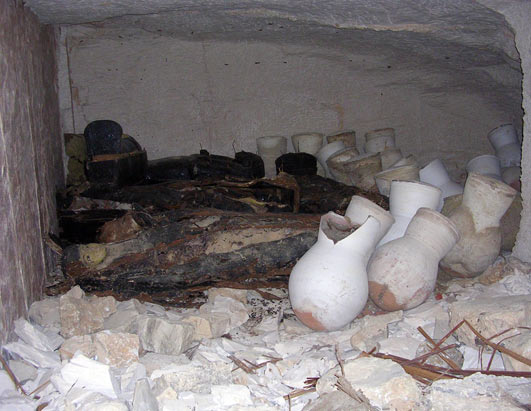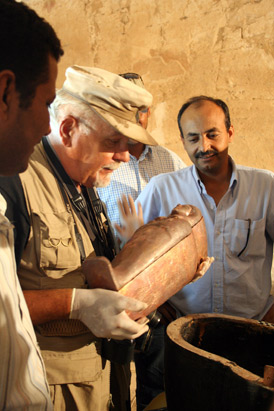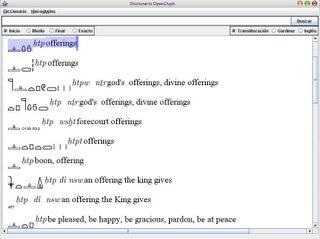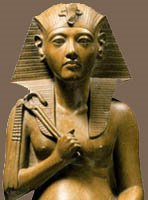The best guide to online hieroglyphic texts can be found on EEF website:
http://www.geocities.com/TimesSquare/Alley/4482/EEFtexts.html
List of indexed texts collected by Michael Tilgner:
THE EEF GUIDE TO INTERNET RESOURCES
FOR ANCIENT EGYPTIAN TEXTS
Old Kingdom & First Intermediate Period
A Seal of Pharaoh Peribsen (in tomb P at Abydos)
The Inscriptions of the Statue of mTn / Metjen (Berlin 1106)
The Cannibal Hymn (PT Utterances 273-274)
The Annal Stone (Palermo Stone and associated Fragments)
Three Letters of Pharaoh Djedkare Isesi
The Pyramid Texts
The False Door of Mehu in his tomb in Saqqara
The Decree of Pepi I for the Pyramid City of Snofru (Berlin 17500)
The Autobiography of Weni the Elder (CG 1435)
The Letter of Pepi II to Harkhuf (in his tomb in Qubbet el-Hawa, no. 34)
The Autobiography of Pepinakht called Heqaib in his tomb in Qubbet el-Hawa (QH 35)
The Instruction of Kagemni (pPrisse 1,1 - 2,9)
The Instruction of Ptahhotep
Middle Kingdom & Second Intermediate Period
Rock inscriptions from the Wadi Hammamat of an expedition under Mentuhotep IV
The Stela of the Priest Mentuhotep (Cambridge, Fitzwilliam Museum E.9.1922)
The Autobiography of Amenemhet called Ameni in his tomb (Beni Hassan 2)
The Autobiography of Khnumhotep II in his tomb in Beni Hassan (BH 3)
Semna boundary stelae of Sesostris III (Berlin 1157; Berlin 14753)
A Cycle of Hymns to King Sesostris III (papyrus Kahun LV.1 / papyrus UC 32157 recto)
A Stela of Ikhernofret (Berlin 1204)
The Transport of the Colossal Statue of DHwti-Htp(.w) / Thot-hotep
The Story of the Shipwrecked Sailor (pPetersburg 1115)
The "Kahun Medical Papyrus" or the "Gynaecological Papyrus" (pKahun (med.) / London UC 32057)
The Dispute of a Man with His Ba (pBerlin 3024)
The Tale of the Eloquent Peasant
The Stelae of Ameniseneb / imny-snb (Louvre C 11 and C 12)
King Kheops and the Magician / Papyrus Westcar (pBerlin 3033)
New Kingdom & Third Intermediate Period
The Autobiography of Ahmose, son of Abana
The Stela of Ahmose from Abydos / Tetisheri Stela (Cairo CG 34002)
The Donation Stela of Ahmose-Nefertari
The Coronation Announcement of Thutmosis I (Cairo CG 34006, Berlin 13726)
The Abydos Stela of Thutmose I (Cairo CG 34007)
The Northampton Stela of General Djehuty
The Obelisk Inscriptions of Queen Hatshepsut in the temple of Karnak
Dedication of the Obelisks by Hatshepsut (block 302 of the Red Chapel)
Graffito of Senenmut in Sehel concerning his work on Hatshepsut's obelisks
The Myth of the Divine Birth
The Speos Artemidos Inscription of Hatshepsut
The Poetical Stela of Thutmosis III (CG 34010)
The Temple Festival Calendar of Thutmosis III in Karnak, South of the granite sanctuary
The King-list of Thutmosis III in Karnak (now: Louvre E 13481bis)
The Obelisk of Thutmosis III, now in Istanbul
The Battle of Megiddo (of Thutmosis III)
The Dream Stela of Thutmosis IV
The Stela of Suti and Hor (BM EA 826)
The Commemorative Scarabs of Amenophis III
Hymns to the Aten
The Boundary Stelae of Amarna
A Graffito from Pawah in the tomb of Pere / pA-jrj (TT 139)
The Restoration Stela of Tutankhamun (CG 34183)
The Great Hymn to Osiris on the Stela of Amenmose (Paris Louvre C 286)
The Myth of the Destruction of Mankind / The Book of the Heavenly Cow
The King-lists on monuments of the 19th Dynasty
The Taking of Joppa (pHarris 500 = pBM 10060, verso)
The Tale of the Doomed Prince (pHarris 500, vs., 4,1-8,14)
The Stela of the Era of 400 Years (JE 60539)
The Obelisk of the Luxor Temple, now Paris, Place de la Concorde
A Satirical Letter (pAnastasi I = pBM 10247)
The Victory Hymn of Merenptah / "Israel Stela"
The Book of Caverns
The Quarrel of Apophis and Seknenre (pSallier I / BM 10185)
The Harem Conspiracy
The Year 4 Abydos Stela of Ramesses IV in Honour of Osiris (JE 48876)
The Great Abydos Stela of Ramesses IV for Osiris and the Gods (JE 48831)
The Contendings of Horus and Seth (pChester Beatty I, recto 1,1-16,8)
The Misfortunes of Wenamun (pMoscow 120)
The Instruction of Amenemope (pBM 10474)
The Stela of Banishment (Louvre C 256)
The Piankhi / Piye Stela (JE 48862)
The Shabaka Stone / "The Memphite Theology" (BM EA 498)
The Stela of Tanutamun / Tanutamani (JE 48863)
The Election Stela of King Aspelta (JE 48866)
Late Period & Greco-Roman Era
The Long Biographical Inscription of Petosiris
The Bentresh Stela (Louvre C 284)
The Satrap Stela (Cairo CG 22182)
The Lamentations of Isis and Nephthys (pBerlin 3008)
The Mendes Stela (CG 22181)
The invasion of Ptolemy III into Mesopotamia
The Decree of Canopus
The Decree of Memphis (Rosetta Stone and associated Fragments)
The Graffito of Esmet-Akhom (Philae 436)
"lord of the two lands" (nb tAw)
"great royal wife" (Hmt wrt nsw)
"son of the king, prince" (sA nsw)
"sovereign, ruler" (ity)
"majesty" (Hm)
"ruler of Upper and Lower Egypt" (nsw biti)
"hereditary prince" (rpa)















































